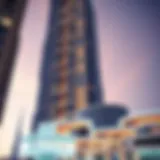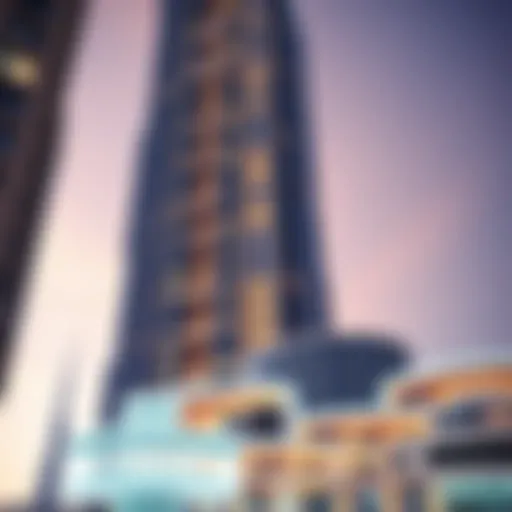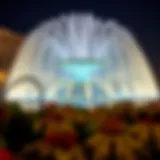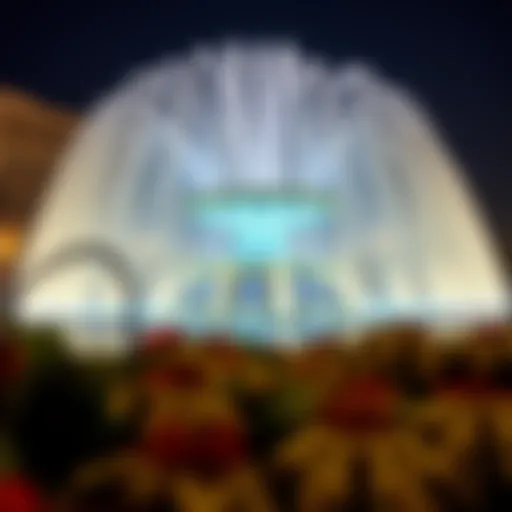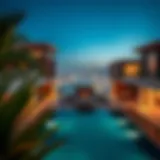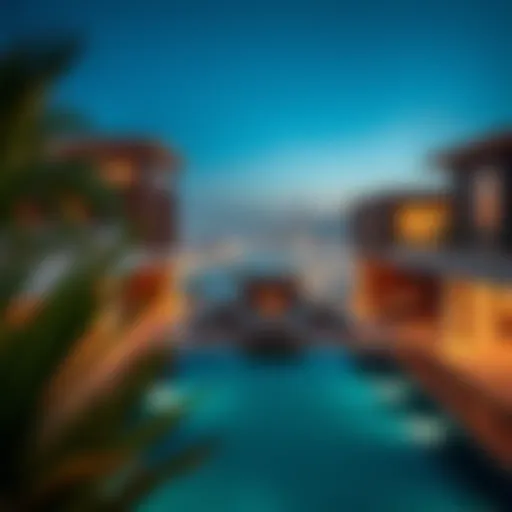Understanding Partition in Deira: Benefits and Insights
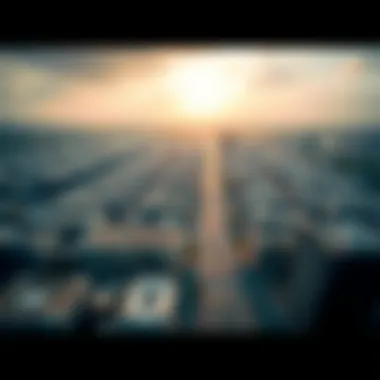

Intro
Deira, a dynamic enclave within the bustling city of Dubai, is a microcosm of cultural diversity and economic opportunities. Renowned for its vibrant markets and rich history, Deira is undergoing a significant transformation, particularly through the practice of partitioning in real estate. As urban developers seek to optimize space, the implications of partitioning are vast—impacting everything from property values to community aesthetics. This article aims to unravel the components and benefits associated with this practice, shedding light on how it shapes modern living in this historic district.
Real estate in Deira is not just about buying and selling; it’s about understanding the landscape in which one invests or resides. Partitioning plays a crucial role in urban planning here, reflecting a blend of tradition and modernity. For property investors, homebuyers, and lifestyle enthusiasts, grasping the nuances of partitioning is key to navigating this complex market.
As we delve into the various segments of this article, expect a thorough examination of market trends, luxury developments, and the socio-cultural fabric of Deira. We will explore how partitioning fosters enhanced living conditions, influences accessibility, and ultimately contributes to the aesthetic appeal of the neighborhood. Alongside, insights for potential buyers and investors will offer a clearer perspective on making informed decisions in this rapidly evolving market.
Prelude to Partition Concepts
Partitioning, often regarded as a fundamental aspect of urban design, involves dividing space into distinct areas to serve different purposes. For various stakeholders, from investors to architects, grasping the notion of partitioning is crucial when navigating the multifaceted landscape of Deira’s real estate market. It plays a pivotal role not only in how spaces are organized but also in shaping the interactions among the people who inhabit them. Understanding these concepts lays the groundwork for appreciating the strategic advantages partitioning has to offer.
Defining Partitioning in Urban Context
In an urban context, partitioning is not merely about erecting physical barriers like walls or fences. It encapsulates a broader ideology where the physical layout influences social dynamics, privacy, and access to resources. For instance, think of the bustling markets of Deira, where vendors create individual stalls. This simple use of temporary partitions facilitates commerce while defining personal space within the larger communal environment.
Aspects to consider when defining partitioning include:
- Functional Divisions: How different areas are used—residential, commercial, or public spaces often require unique configurations.
- Social Dynamics: Privileged access or restrictions that affect interpersonal relationships within a neighborhood.
- Cultural Sensitivities: The design that reflects the values and norms of a community, influencing acceptance or resistance to changes.
This definition isn't restricted to tangible structures alone; it vividly illustrates how physical separations can signify emotional and cultural divides. For investors and urban planners, a nuanced understanding helps tailor developments that resonate with local sensibilities, thus enhancing community acceptance.
Historical Overview of Architectural Partitioning
Looking back, partitioning has undergone significant evolution from the ancient dwellings of early civilizations to the modern skyscrapers of today. In Deira, which serves as a melting pot of cultures and traditions, the history of partitioning reflects broader architectural trends.
Ancient Roots: Many historical homes had distinct sections for family members, determined by age and gender. The architecture often included screens or semi-permanent divisions that allowed for both privacy and community.
Colonial Influences: The introduction of European styles brought new partitioning ideologies, where public and private spaces became more specialized. This led to residential structures designed with a clear distinction between living areas and service zones.
Modern Interpretations: Today, innovative materials and techniques have enabled architects to explore flexible and dynamic partitioning. For example, movable screens and lightweight walls allow for spaces that adapt to the needs of their inhabitants.
Understanding this historical context allows investors and professionals to appreciate how architectural choices influence lifestyle and community growth. Each era’s partitioning methodologies reflect changing societal preferences, which in turn shape the real estate landscape you see in Deira today.
"A well-placed partition is more than a wall; it's a conduit for interactions, a statement of purpose, and a guardian of privacy."
Through exploring these intricate layers of partitioning, readers can better navigate the real estate dynamics in Deira, fostering informed decisions about investments or lifestyle choices.
The Deira District: A Brief Overview
Understanding Deira is like peeling back the layers of an onion; there’s much more than what first meets the eye. This district is one of the oldest and most diverse neighborhoods in Dubai, acting as a historical gateway and a buzzing center of commerce. It's a melting pot of cultures, where traditional meets modern, making it essential for anyone looking at real estate or development in Dubai to grasp its significance.
The importance of this area in relation to partitioning cannot be overstated. Partitions in Deira not only reshape physical spaces but also have social implications that resonate throughout the community. For investors and property developers, recognizing how partitioning affects real estate can lead to more informed decisions that enhance both property values and livability.
Geographic and Cultural Significance of Deira
Deira occupies a prime location along the shores of Dubai Creek, serving as an anchor for previous trade routes. This geographic positioning has long established the area as a commercial hub, drawing merchants and tourists from around the globe. The rich tapestry of culture here is reflected in the vibrant souks, including the Spice Souk and Gold Souk, which showcase the multicultural nature of the district.
Deira's cultural identity is layered like a rich dish—each flavor tells a story of various influences, from Persian to Indian to Emirati heritage. Each community contributes to a dynamic environment, further emphasizing the need for effective partitioning. Creating spaces within such a diverse community might require acute understanding of not just architectural demands but also the emotional and cultural divides that exist. It’s this cultural significance that underlies the need for thoughtful urban planning and effective partitioning solutions.
"In Deira, every corner speaks the language of history, culture and trade, urging us to consider how partitions can enhance this storied landscape."
Current Real Estate Trends in Deira
The real estate landscape in Deira is constantly evolving. New developments often seem to pop up like daisies in spring, but at the same time, existing structures face pressures from modernity. Investors are keenly interested in the area due to its accessibility and vibrant lifestyle. Properties are increasingly being optimized for value through strategic partitioning, enhancing both residential and commercial spaces.
Significant trends include:
- Mixed-Use Developments: These have become popular as they blend residential, retail, and office spaces into single complexes, making effective partitioning essential.
- Affordable Housing Initiatives: Enhanced focus on creating budget-friendly units has led to innovative partitioning solutions that maximize available space without compromising comfort.
- Luxury Developments: Deira is also seeing a rise in upscale properties, where aesthetic partitioning is employed to attract affluent buyers.
Overall, the breathing life into Deira's real estate is a fine balance between maintaining its cultural essence and paving the way for modernity. As stakeholders aim to capitalize on these emerging trends, the role of effective partitioning continues to grow, shaping community dynamics and ultimately influencing the real estate market.
Types of Partitions in Deira

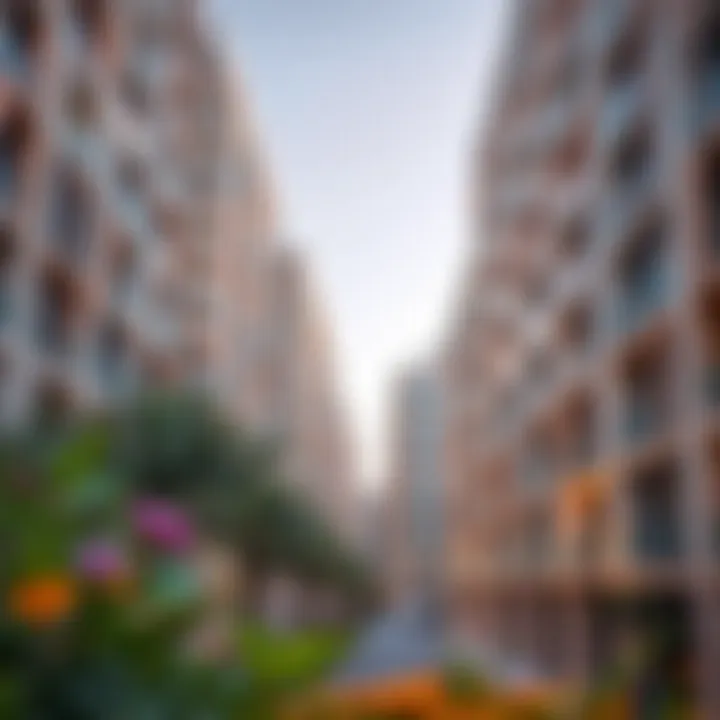
Partitioning, in the context of Deira, is pivotal for a variety of reasons. It not only shapes the way neighborhoods look and feel but also influences how they function socially and economically. By exploring the types of partitions prevalent in this lively district, we can unveil how they affect property values, community interactions, and cultural dynamics. These partitions can be broadly categorized into two types: physical and intangible. Understanding both is key for investors, homebuyers, and architects who seek to develop and enhance properties in Deira’s unique urban landscape.
Physical Partitions: Walls and Fences
Physical partitions, such as walls and fences, play a fundamental role in defining spaces within Deira. They provide structure to properties and boundaries between private and public realms. These partitions serve several practical purposes:
- Security: Walls and fences not only deter unwanted visitors but also give residents peace of mind.
- Privacy: For many, the desire to retreat from the hustle and bustle of city life is paramount. High walls can shroud backyards, creating sanctuary spaces where families can relax.
- Aesthetic Appeal: Interestingly, a well-designed fence or wall can enhance the visual beauty of a property. Numerous homes in Deira flaunt intricate designs, often reflective of both traditional and modern architectural influences.
Factors such as material choice can also impact the efficacy and appeal of physical partitions. Brick, wood, or even metal can transform an ordinary boundary into a stunning feature of the landscape. However, it’s essential to consider local building regulations and community aesthetics when constructing these physical barriers.
"Partitioning is not just about dividing space; it’s about defining what each space means to its inhabitants."
Intangible Partitions: Emotional and Cultural Divides
Intangible partitions encompass more than just physical barriers; they delve into emotional and cultural realms, carving out social landscapes within Deira. Unlike walls and fences, these types of partitions are often invisible yet profoundly influential. They can manifest in several ways:
- Social Divides: Communities within Deira can exhibit varying levels of interaction based on factors like socio-economic status or cultural backgrounds. These disconnects often foster a sense of community among like-minded individuals but can also lead to fragmentation.
- Cultural Integration: Deira, like much of Dubai, is a melting pot of cultures. While some groups might self-segregate, there are numerous instances where diverse backgrounds come together to create vibrant neighborhoods.
- Emotional Connections: The way people relate to their neighborhoods can form boundaries as robust as any physical wall. Those who feel connected to their community often invest emotional resources into it, reinforcing their ties and the cohesion of the area.
Recognizing these intangible partitions is crucial for those looking to invest or reside in Deira. It requires a nuanced approach to community engagement that goes beyond bricks and mortar.
In summary, the types of partitions in Deira directly affect not just the physical landscape, but also the very fabric of social relationships and cultural interactions. Understanding both physical and intangible boundaries offers invaluable insights for anyone interested in the real estate dynamics within this iconic district.
Benefits of Partitioning in Real Estate
Partitioning plays a vital role in shaping not just the aesthetic of homes and commercial spaces in Deira, but also in adding tangible benefits that reach beyond mere physical boundaries. Understanding this aspect is necessary for any stakeholder involved in the Deira real estate scene—from investors and homebuyers to Realtors and architects. As property values fluctuate and urban environments evolve, the strategic implementation of partitions can prove to be a game-changer.
The judicious use of partitioning can enhance property appeal, lead to increased privacy, and promote a greater sense of security, all of which are significant factors for any investor considering the Deira area. Moreover, it also carries implications for community dynamics and social interactions, which indirectly influences the market value of properties.
In the context of Deira’s vibrant urban life, where people seek both comfort and efficiency, partitioning can create sanctuary-like spaces amidst the bustling environment.
Enhancement of Property Value
The value of a property in any urban area is influenced by multiple factors, and partitioning has a notable impact on how buyers and tenants perceive space. When partitions are employed judiciously, they can enhance functionality—turning a single-room apartment into a cozy refuge segmented for living, working, and relaxing. Buyers are often willing to spend more on a well-thought-out layout that prioritizes ease of living.
In Deira, where real estate competition is fierce, having clearly defined spaces can set a property apart from its neighbors. For real estate investors, adding partitions can be a financially shrewd decision. Customized spaces that serve distinct purposes often attract higher rents and lead to quicker sales.
Additionally, features such as high-quality partitions made from durable materials can also symbolize luxury. Enhanced aesthetics contributed by well-designed partitions can create an impression of sophistication that boosts property value.
- Key points include:
- Defined living areas elevate the usability of properties.
- Invest in quality materials to reinforce luxury appeal.
- Ensure layouts support varied uses to capture broader market interest.
"Space is not just about the dimensions; it's about how you create an experience in it."
Promotion of Privacy and Security
In bustling districts like Deira, where life thrums with activity, the need for privacy becomes paramount. Whether one is looking at residential or commercial properties, partitions play an important role in offering that essential sense of seclusion. For homebuyers, living arrangements that respect personal space create a sanctuary away from the chaos outside.
From a security standpoint, well-designed partitions can serve as barriers against intrusion. This is particularly pertinent in shared properties, like apartment complexes, where residents seek peace of mind. Properties that incorporate walls or other forms of partitions can reassure potential buyers or renters, marking the difference between a casual visit and a compelling purchase decision.
Furthermore, the investment in intelligent partitioning systems—including soundproof walls or security-enhanced barriers—can elevate a property’s attractiveness. Buyers today are more conscious of their need for a safe and serene living environment.
- Considerations for enhanced privacy and security:
- Customizable options that accommodate personal preferences are vital.
- Installation of soundproof partitions can significantly improve quality of life.
- Visual aesthetics should not compromise functionality; balance is key.
Impact on Community Dynamics
The impact of partitioning on community dynamics within Deira extends beyond mere physical separations. It's a much deeper concept that touches people’s lives, integrations, and forms of interactions. By implementing partitions—be it in the form of walls, fences, or even culturally based divides—this practice has significant implications for social networks, family structures, and cultural exchange. This section will elucidate how partitioning shapes both communal ties and personal relationships.
Social Interactions and Community Cohesion
In the heart of Deira, the architecture of partitioning isn't just about delineating space; it’s about weaving emotional and social fabric that holds communities together. Social interactions can flourish or fray depending on how spaces are partitioned. Thoughtfully designed areas encourage chance encounters, fostering friendships that might otherwise not blossom. Take for instance the coffee shops and parks—while partitioning offers privacy for quiet reflection, it can also create venues for community engagement.
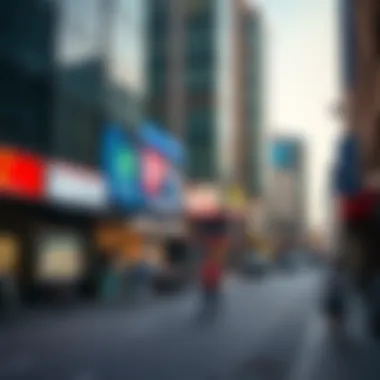

Dividing spaces intentionally enhances privacy but also encourages shared resources that elevate communal spirits. Social capital is built on the premise of interactions, where the layout of a neighborhood motivates people to step outside their homes and engage with neighbors. This dynamic leads to a nurturing environment; people often feel more related and secure when they know their neighbors, which can bolster a sense of belonging.
However, it’s crucial to note that poorly executed partitioning can also lead to isolation. Consider high walls that block sight lines and hinder the flow of pedestrian movement; those can inadvertently cork relationships. Achieving balance in partitioning is key. It should create inviting spaces while respecting personal boundaries.
Cultural Integration and Segregation
The dual nature of cultural integration and segregation in Deira illustrates a complex social tapestry. On one hand, physical partitions can create enclaves that celebrate diversity, allowing various cultures to coexist peacefully. The intricate mosaic of Deira’s neighborhoods—where Emirati heritage meets expat communities—is a prime example of how well-placed partitions contribute to cultural integration. Instead of hard lines that delineate boundaries, they can serve as bridges that connect diverse cultural narratives.
On the flip side, stark partitions can exacerbate segregation. When communities are divided along economic or cultural lines, this can lead to misunderstandings and missed opportunities for dialogue. It’s imperative for stakeholders involved—be it urban planners, real estate developers, or community leaders—to be mindful of these implications during partition design. Fostering spaces that encourage mingling, like community centers or marketplaces with open layouts, can diminish segregation and enhance integrated living.
In summary, the effects of partitioning on social interactions and cultural integration in Deira are profound. The way spaces are shaped can lead to either harmonious community dynamics or detrimental segregation. Understanding these implications not only serves the interests of real estate investors but also of everyone who calls Deira home.
“One of the greatest issues facing modern communities is the balance between individual privacy and communal participation.”
Regulatory Framework Surrounding Partitioning
Partitioning in urban settings, particularly in a bustling district like Deira, cannot operate in a vacuum. Understanding the regulatory framework that governs these practices is essential for all parties involved—developers, investors, homeowners, and local authorities. This framework ensures that any partitioning is not only aesthetically pleasing but also safe, secure, and compliant with the community's standards and regulations. The importance of this oversight lies in its ability to promote harmony, respect cultural sensitivities, and mitigate any legal conflicts that potentially arise from improper partitioning.
Local Laws and Guidelines
Navigating the laws and guidelines surrounding partitioning is akin to following a roadmap. Local regulations dictate the structure's height, materials, aesthetics, and even the placement within the property lines. The Dubai Municipality, alongside other governing bodies, lays down specific rules tailored for different neighborhoods, including Deira. Here are some notable points:
- Building Codes: Compliance with architectural guidelines ensures that new structures align with the historic charm of Deira. This might include using specific materials that reflect local heritage.
- Zoning Restrictions: Certain areas may have stricter rules due to their cultural significance or proximity to historical sites, conserving the original essence of the community.
- Health and Safety Standards: Local laws also focus on safety, emphasizing that partitions do not create hazards for residents and visitors, particularly in densely populated areas.
These local regulations not only protect community heritage but also enhance property values by maintaining an organized urban environment.
Compliance and Legal Implications
Adhering to the established guidelines and laws comes with its fair share of implications. Non-compliance can lead to a series of complications that affect everyone involved in the partitioning process. Investors and homeowners must be aware of the following potential legal ramifications:
- Fines and Penalties: Violating local regulations can result in hefty fines for property owners and developers, impacting the financial feasibility of projects.
- Legal Disputes: In cases of non-compliance, conflicts may arise between neighbors, leading to community disputes that are often costly and time-consuming.
- Reconstruction Costs: If a partition fails to meet regulations, property owners may find themselves in a position where they need to demolish or significantly alter their projects, incurring additional costs.
"Adhering to the regulatory framework not only paves the way for successful partitioning but also safeguards the reputation and interests of all stakeholders involved."
Architectural Styles in Partitioning
Exploring architectural styles in partitioning unveils not just design principles but also reflects the cultural ethos of the Deira district. The significance of architectural styles in partitioning is paramount as they directly influence not only aesthetics but also the functionality and livability of spaces. Each style comes with its unique characteristics that cater to specific needs of the inhabitants and adapts to the local environmental context. Understanding these styles helps investors, architects, and buyers make informed decisions that align with both personal needs and community values.
Traditional vs. Modern Approaches
When it comes to partitioning in Deira, traditional and modern approaches create a fascinating juxtaposition. Traditional partitioning typically emphasizes craftsmanship and materials that resonate with the historical context of the region. Think thick mud-bricks, intricate wooden lattices, and decorative motifs that hark back to older architectural sensibilities. This approach embodies durability and a hands-on crafting tradition, often resulting in buildings that not only serve practical purposes but also evoke a sense of belonging and heritage.
In contrast, modern partitioning employs contemporary materials like steel, glass, and synthetic composites designed for flexibility and sustainability. For instance, the use of transparent glass partitions not only enhances natural light but also gives a feeling of spaciousness, which is a modern desire in urban living. While traditional methods prioritize permanence and history, modern techniques frequently focus on adaptability and efficiency. As homeowners navigate these two approaches, they find value in blending elements of both to create spaces that honor the past while offering all the conveniences of present-day technologies.
Innovative Design Solutions
The quest for innovative design solutions in partitioning has given rise to myriad strategies that reflect both functionality and creativity. Architects are now leaning into modular designs that allow for easy reconfiguration of spaces without substantial overhaul. A noteworthy development is the use of movable partitions, which can quickly open up a space for social gatherings or close it off for privacy. This flexibility is especially valuable in Deira’s multifaceted environment, where the population of expats and locals alike benefits from adaptable living arrangements.
Moreover, sustainability in architectural partitioning is gaining traction. Eco-friendly materials and energy-efficient designs not only reduce environmental impact but can also be seen as an investment in the future.
Consider the inclusion of green walls that separate spaces while also improving air quality. This innovative approach merges aesthetics with environmental consciousness, appealing particularly to the ever-growing demographic of environmentally aware investors. In short, the blending of innovative design with traditional wisdom creates an architectural language that speaks to Deira’s unique character.
"As partitioning evolves, it transforms not only physical spaces but also the relationships and interactions between individuals in the community."
Emphasizing these architectural styles informs potential buyers and investors about the dynamic nature of partitioning in Deira. Understanding how different styles can provide diverse benefits helps in making informed choices regarding space utilization, investment opportunities, and enhancing overall living experiences.
Challenges Associated with Partitioning
Understanding the challenges linked to partitioning in Deira is crucial, particularly for investors, homebuyers, and architects looking to navigate the unique landscape of this Dubai district. The partitions not only shape the physical environment but also influence community interactions and the overall livability of the area. By shedding light on these challenges, stakeholders can make informed decisions that align with their goals—whether it’s maximizing property value or fostering a sense of community.
Construction and Maintenance Issues
One of the most pressing concerns with partitioning in Deira lies in the construction and maintenance phases. Establishing effective partitions requires both an investment of time and resources, which can lead to complications. When thinkers weigh in on the construction of walls, fences, or even landscaping elements meant to delineate spaces, they often overlook the long-term upkeep these structures demand.
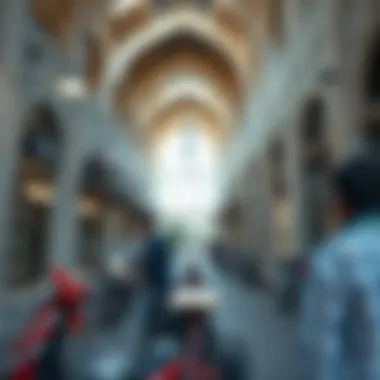
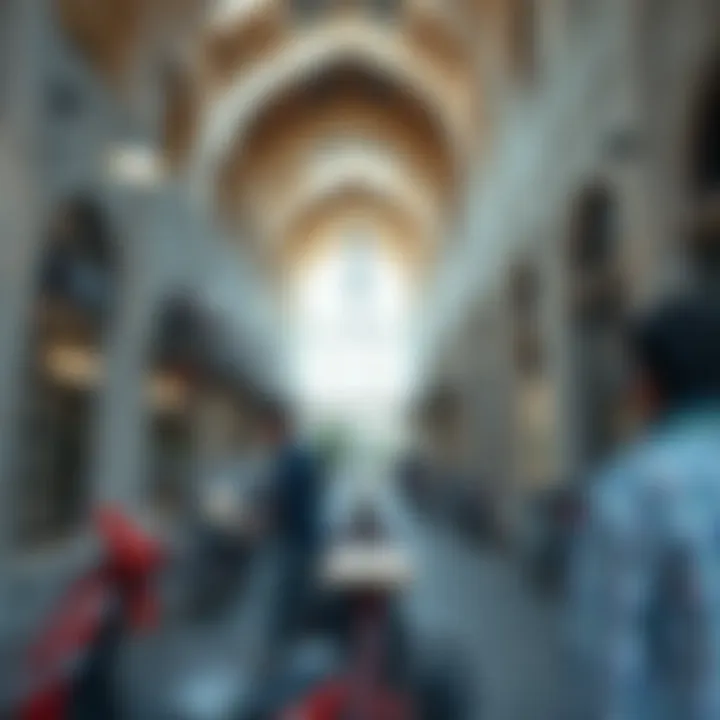
Several factors contribute to these complications:
- Quality of Materials: Using low-quality materials can lead to rapid deterioration, causing homeowners to frequently shell out cash for repairs.
- Aesthetics vs. Functionality: Often, partitions are built more for aesthetic reasons than for practical functionality. When the chips are down, this disconnect can lead to costly renovations if those structures don’t serve their intended purpose.
- Site Limitations: Deira's unique urban layout, with its mix of old and new structures, can complicate the construction process. Zoning regulations and underground utilities must be considered, as they might restrict the placement of partitions.
In essence, the durability and architectural integrity of partitioning in Deira can become a double-edged sword. Homeowners and investors must ensure they are clear about their expectations and prepared to allocate the necessary resources for upkeep to prevent larger issues down the line.
Community Disputes and Legal Conflicts
Community dynamics are complex and can easily be tangled with partitioning choices. When residents approach the building of partitions, whether for privacy or aesthetic purposes, they can step into a minefield of disputes and legal issues. These discordances can have ripple effects on relationships and community cohesion.
Several aspects warrant attention:
- Neighborhood Agreements: Residents often need to consult with their neighbors before undertaking any significant changes. Ignoring this can lead to tensions and even disputes that see neighbors at odds over property lines and boundary definitions.
- Legal Regulations: Various laws govern how partitions can be constructed. Not complying can lead to fines or orders to dismantle newly erected structures. Investors must navigate the complex web of local building codes, and understanding these intricacies can mean the difference between a profitable venture or a costly legal headache.
- Cultural Sensitivities: Deira's diverse population brings about varying perspectives on what constitutes acceptable partitioning. Engaging in open dialogues with community members, especially in a multicultural setting, improves understanding and minimizes conflict.
“Building a wall can either create barriers or foster connections, depending on how well it’s integrated within the community.”
Future Trends in Partitioning
The future of partitioning in Deira isn't just about bricks and mortar; it's an intersection where sustainability meets technology and innovation. As urban areas evolve, so does the need for partitions that not only separate spaces but enrich the environment and enhance living experiences. For property investors, homebuyers, and urban planners, understanding these trends is essential. Recognizing how they can shape the housing landscape can influence better decisions and investments down the line.
Sustainability and Green Building Practices
With climate change more prominent than ever, the emphasis on sustainability in architecture becomes non-negotiable. In Deira, this trend is gaining momentum. Sustainable partitioning includes the use of eco-friendly materials like recycled steel and bamboo, which can significantly reduce a project's environmental footprint.
Adopting green building practices not only benefits the environment but also offers long-lasting advantages to homeowners and investors:
- Cost Reductions: Using sustainable materials and energy-efficient systems lowers utility bills over time.
- Enhanced Market Appeal: Properties built with sustainability in mind can attract environmentally conscious buyers.
- Government Incentives: Often, local authorities provide incentives for green building practices, making them more appealing financially.
In Deira, architects and developers are increasingly opting for modular wall systems that use fewer resources, resulting in sustainable and efficient building processes. This not only adheres to regulations for modern buildings but also resonates with a community that values ecological integrity.
"Sustainability isn’t just a trend; it’s the foundation of future urban planning."
Smart Technology Integration in Partitioning
Smart technology is changing the game, pushing boundaries on how we design and integrate space. In Deira, the advent of smart partitioning means incorporating elements like automated movable walls and sound-proofing technologies. This innovation is more than a shiny new gadget; it optimizes space and enhances comfort.
Consider how smart partitions can add value:
- Flexibility: Automated movable walls allow spaces to be reconfigured on demand. This is particularly beneficial in commercial properties where different kinds of setups are needed at various times.
- Energy Efficiency: Smart technologies can adjust lighting and temperature based on occupancy, significantly reducing energy costs and creating a more comfortable environment.
- Enhanced Security: Integrating smart locks and surveillance with partitioned areas provides both privacy and heightened security measures for residents.
As developers in Deira explore these possibilities, incorporating smart technology into partitioning can lead to properties that are not only more appealing but also command higher market values. Buyers are often willing to pay a premium for advanced features that enhance safety and convenience.
The combination of sustainability and technology offers a fresh narrative on partitioning in Deira, one that resonates with the future. Homebuyers and investors looking into properties in this area should keep an eye on these trends, as they will likely shape real estate decisions in the years to come.
Closure: The Role of Partitioning in Deira’s Evolution
Partitioning in Deira has evolved into a significant aspect of urban living, shaping not just the physical landscape, but also the socio-economic dynamics of this vibrant district. In this final section, we will distill the key elements that underscore the importance of understanding partitioning's role in Deira’s ongoing transformation.
One of the most notable benefits of partitioning is the enhancement of property value. Investors and homeowners alike have seen that well-defined boundaries and thoughtful space division often attract premium prices in today's competitive market. Modern buyers are drawn to properties that offer a blend of privacy with an open feel. As a result, strategic partitioning plays a pivotal role in increasing desirability while setting the stage for lucrative returns on investment.
Furthermore, cultural and emotional dimensions come into play when discussing partitioning. The district of Deira is a melting pot of cultures, and partitions can help address both physical and emotional barriers among diverse communities. By fostering personal spaces while promoting community interaction, partitions contribute to a balanced urban environment. This dual focus engages individuals from various backgrounds, ultimately fostering greater social cohesion which is integral to Deira's evolution.
"Understanding the nuances of partitioning allows investors to respond effectively to market trends, creating living spaces that resonate with current demands."
Considering the challenges associated with partitioning—like compliance with local laws and the potential for community disputes—it becomes essential for stakeholders to be well-informed. Knowledge of the regulatory framework can prevent costly missteps, ensuring that all developments meet established guidelines while maintaining community harmony.
Summary of Key Insights
To summarize the insights presented, the role of partitioning in Deira is multifaceted. Key takeaways include:
- Property Value Enhancement: Strategic partitioning can significantly increase market value, attracting discerning buyers.
- Cultural Integration: Partitioning addresses both physical and intangible barriers, promoting social cohesion and diversity.
- Regulatory Compliance: Understanding local laws is crucial for successful project execution and community acceptance.
As Deira continues to develop, these factors remain paramount in ensuring sustainable growth and urban prosperity.
Looking Ahead: Future Opportunities for Investors
Looking forward, the prospects for investors in Deira’s partitioning landscape are promising. With trends leaning towards sustainability and smart technology, investors can capitalize on a lucrative niche within the real estate market.
- Sustainable Practices: There’s an increasing demand for environmentally friendly building solutions. Investors who adopt green building practices may find a competitive edge, attracting eco-conscious buyers and renters.
- Smart Technology Integration: As urban living evolves, integrating smart technology with partitioning designs can enhance convenience. Automated lighting, security systems, and energy-efficient solutions can set a property apart in a crowded market.
- Diverse Property Types: Opportunities abound for varied developments—from residential units catering to families seeking space to smaller, flexible options that appeal to young professionals.
By understanding the implications of partitioning and anticipating market trends, investors can position themselves advantageously in the bustling landscape of Deira. Engaging with the evolving needs of the community while adhering to innovative practices could very well hold the key to unlocking long-term success.
